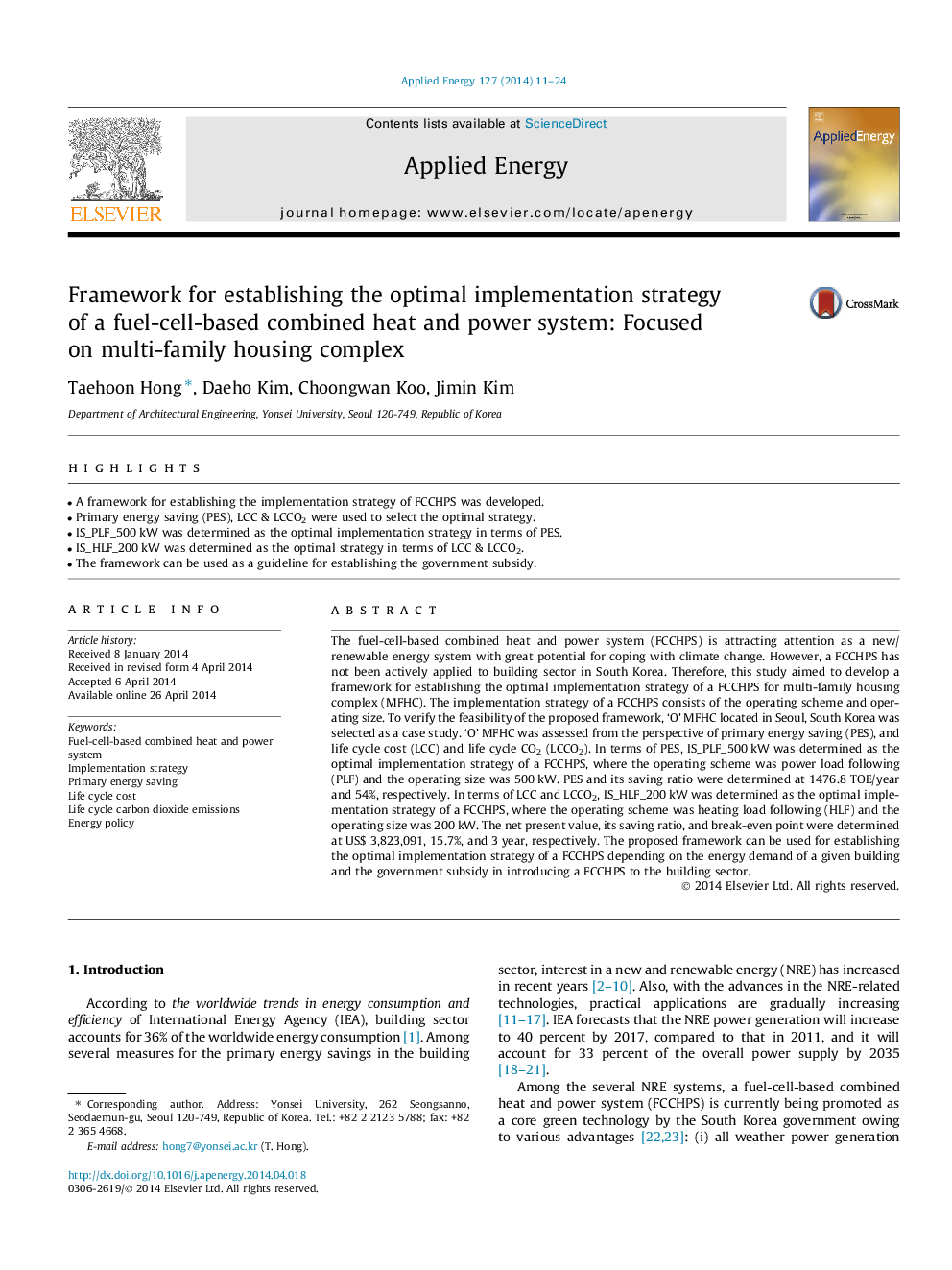| Article ID | Journal | Published Year | Pages | File Type |
|---|---|---|---|---|
| 242735 | Applied Energy | 2014 | 14 Pages |
•A framework for establishing the implementation strategy of FCCHPS was developed.•Primary energy saving (PES), LCC & LCCO2 were used to select the optimal strategy.•IS_PLF_500 kW was determined as the optimal implementation strategy in terms of PES.•IS_HLF_200 kW was determined as the optimal strategy in terms of LCC & LCCO2.•The framework can be used as a guideline for establishing the government subsidy.
The fuel-cell-based combined heat and power system (FCCHPS) is attracting attention as a new/renewable energy system with great potential for coping with climate change. However, a FCCHPS has not been actively applied to building sector in South Korea. Therefore, this study aimed to develop a framework for establishing the optimal implementation strategy of a FCCHPS for multi-family housing complex (MFHC). The implementation strategy of a FCCHPS consists of the operating scheme and operating size. To verify the feasibility of the proposed framework, ‘O’ MFHC located in Seoul, South Korea was selected as a case study. ‘O’ MFHC was assessed from the perspective of primary energy saving (PES), and life cycle cost (LCC) and life cycle CO2 (LCCO2). In terms of PES, IS_PLF_500 kW was determined as the optimal implementation strategy of a FCCHPS, where the operating scheme was power load following (PLF) and the operating size was 500 kW. PES and its saving ratio were determined at 1476.8 TOE/year and 54%, respectively. In terms of LCC and LCCO2, IS_HLF_200 kW was determined as the optimal implementation strategy of a FCCHPS, where the operating scheme was heating load following (HLF) and the operating size was 200 kW. The net present value, its saving ratio, and break-even point were determined at US$ 3,823,091, 15.7%, and 3 year, respectively. The proposed framework can be used for establishing the optimal implementation strategy of a FCCHPS depending on the energy demand of a given building and the government subsidy in introducing a FCCHPS to the building sector.
